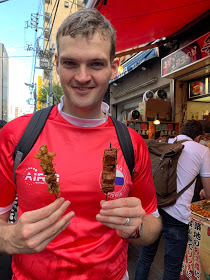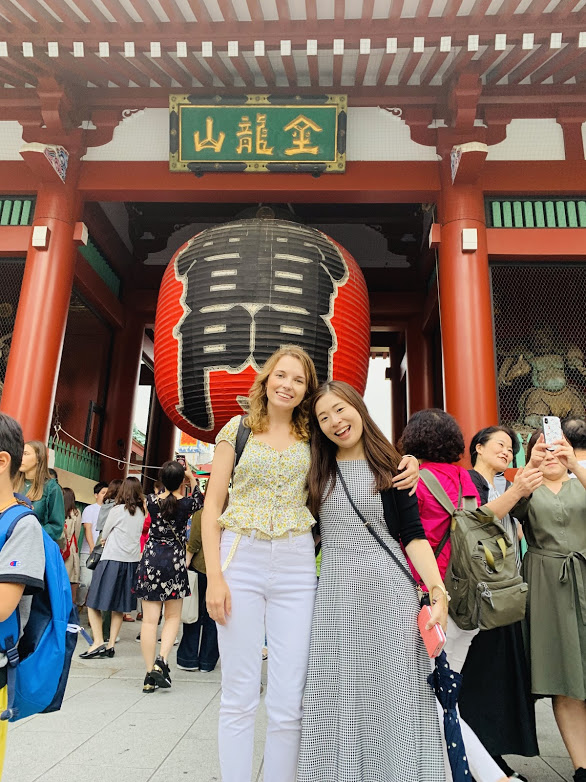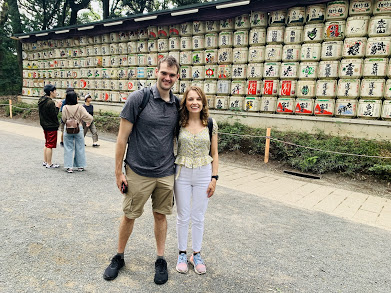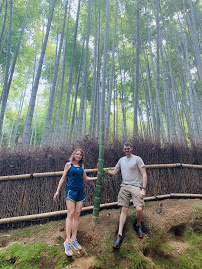Japan is the first country in Asia to host the Rugby World Cup and two things have been consistent: the warmth of the welcome and the appreciation by travelling fans for the show being put on in Japan! It is much more than a tournament. It is about being able to experience and enjoy a culture, language and way of life, which for most is completely new. It was extremely well organised with great participation by the host country. Financially and in terms of participation, it was the most successful World Cup there has been.
Tokyo
Our first stop was seeing the opening game of Japan vs. Russia. We got round Tokyo on the underground using a Pasmo (similar to an Oyster card). The underground stations in Tokyo are insane – Shinjuku station has 200 exits so its far to say we guessed on the right exit at most stations.
Japan’s ‘taiko’ drums set the beat as the names of the 20 participating nations were projected into a likeness of Mount Fuji. Huge cheers went up for the defending champions but the biggest, of course, were reserved for hosts Japan. It was incredible to see the amount of kids accompanying their parents after work to watch the game and getting involved!
I don’t think anyone thought there would be much excitement. The worry about the tournament was that the smaller games would get lost, because Japan isn’t a major rugby country. But because Japan beat South Africa in the Rugby World Cup in 2015 rugby became so popular, it became the hottest ticket in town. The thing that struck us the most was the amount of goodwill around. The Japanese embracing foreigners and really understood how big the World Cup is. We thought they embraced that fully.
Outside of the Rugby World Cup, Tokyo is famous for being a vertical city and is synonymous with sci-fi cityscapes and pop culture. Some of our favourite districts were Akihabara (anime and gaming district), Harajuku (shrines), Ginza (famous fish market) and Roppongi (where we visited a hedgehog cafes).
Also going up the tallest building in a city is always a favourite for us. The Tokyo Skytree is the tallest tower in the world and is second only in height (at the moment anyway) to the Burj Khalifia in Dubai. We visited the Skytree early to avoid the queues and on a clear day it’s possible to see Mount Fuji.
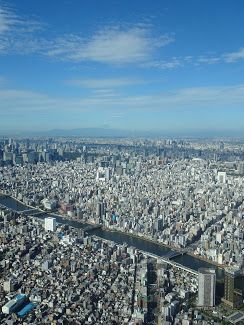
This hyper modern image reflects one of the city’s many layers. To truly understand Tokyo, you have to start with Edo -the name of the city under the Tokugawa shoguns. A little of what we think about today as quintessentially Japanese like kabuki, samari, ninjas, sumo wrestling – are rooted in the culture of Edo. The Edo period pretty much define what most of us think about when we imagine ‘traditional Japan’ so seemed fitting that our next stop would be Kyoto.
Kyoto
In typical style our trip to Kyoto was via Kobe to see England vs. USA and Ireland vs. Russia in the RWC. One of our favourite things to do in Kyoto was seeing the bamboo forests. Tall green stalks, dotted around narrow paths are areas of natural beauty in Japan.
No trip to Kyoto is complete without hiking to the colourful shrines and historic temples. There are two religions in Japan – Shintoism and Buddhism. Our favourite shrines to visit in Kyoto were Fushmi Inari-Taisha and Eikando Zenriji .
We found an amazing Buddhist temple called Rengeoin Sanjusangendo. You’re not allowed to take photos inside but the sheer grandeur and volume of the Buddhist statues within are inspiring, and something that is different from all other temples in Kyoto.
Our favourite part of the whole trip (apart from the rugby of course) was visiting Himeji castle. It’s widely considered as Japan’s most spectacular castle for its imposing size and beauty. Unlike many other Japanese castles it was never destroyed by war, earthquake or fire.
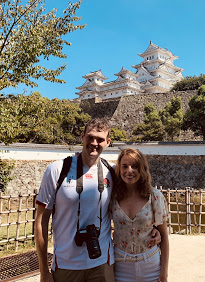
Kyoto has managed to preserve its authenticity and act as a window into Japan’s past. When the overlords of rugby a decade ago chose Japan to host the first Rugby World Cup in Asia, they hoped to spread the gospel of the sport beyond the tier one nations. They did this and more and Japan became the first Asian nation ever to reach a quarter final in a Rugby World Cup.






